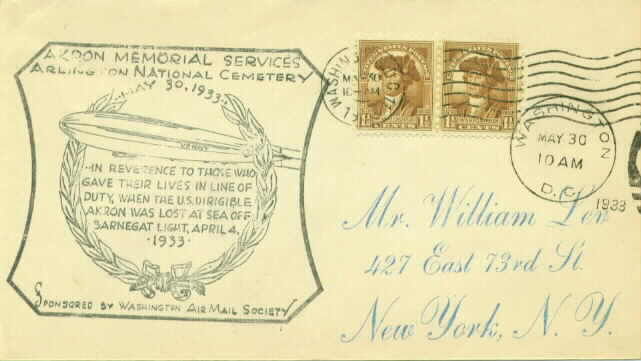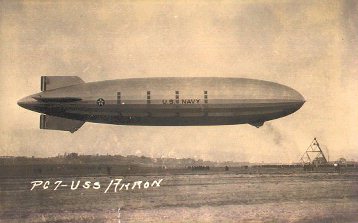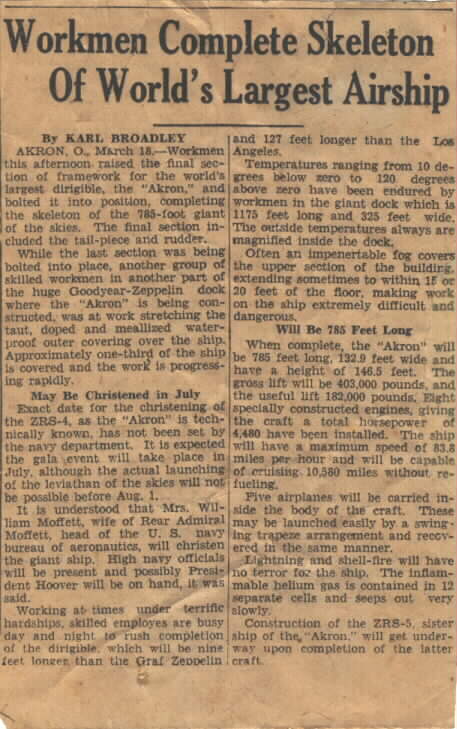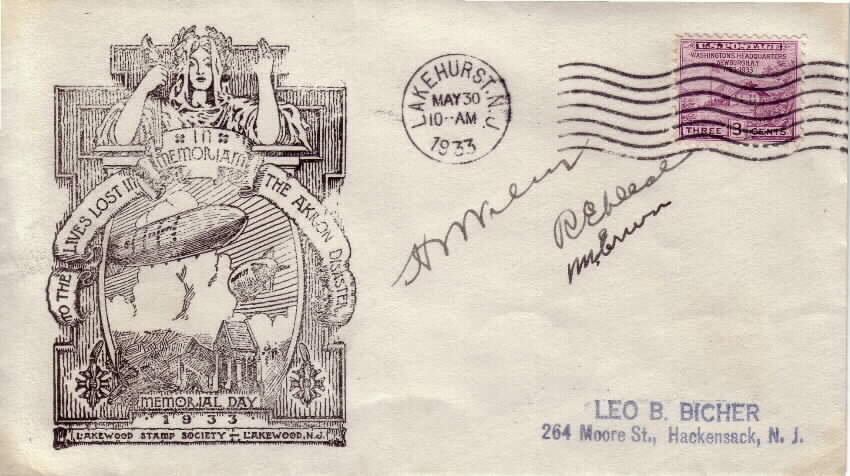Courtesy of the United States Navy
U.S. NAVY AIRCRAFT — 1922-1962 DESIGNATION SYSTEM
USS Akron (ZRS-4), Airship 1931-1933
USS Akron, first of a class of two 6,500,000 cubic foot rigid airships, was built at Akron, Ohio. Commissioned in late October 1931, she spent virtually all of her short career on technical and operational development tasks, exploring the potential of the rigid airship as an Naval weapons system. During the remainder of 1931 and the early part of 1932, Akron made flights around the eastern United States and over the western Atlantic, including one trial of her capabilities as a scouting unit of the fleet. Damaged in a ground-handling accident at Lakehurst in late February 1932, she was again ready for flight two months later and began tests of her ability to operate an embarked unit of airplanes. These would greatly extend her reconnaissance reach and enhance her defenses against hostile air attack.
During May and June 1932, Akron was based on the West Coast, performing a successful search mission over the Pacific as part of a fleet exercise. However, a fatal accident early in this deployment, in which two Sailors lost their lives, provided further proof that handling large airships at their ground bases was an inherently risky proposition. Another accident, while leaving the hangar at Lakehurst in August, reinforced this conclusion.
Akron flew extensively during last half of 1932, further refining her airplane support and search capabilities. In January and March 1933 she twice went south, visiting Florida, Cuba and Panama to explore the base sites in the U.S. fleet’s southern operating zone. While beginning a trip to the New England area, Akron encountered a violent storm over the New Jersey coast and, shortly after midnight on 4 April 1933, crashed tail-first into the sea. Only three of the seventy-six men on board survived this tragic accident. During the search for other possible survivors, the Navy non-rigid airship J-3 also crashed, killing two more men.
Soon after Akron’s loss, Navy divers examined her wreckage, which was located about a hundred feet below the ocean surface east of Atlantic City, N.J. More recently, in June 2002, the research submarine NR-1 revisited the airship’s crash site, where much of her collapsed framework remains visible on the Continental Shelf, nearly seventy years after the great dirigible went down.

I noticed that you have a picture of memorial cachet for the USS Akron (ZRS-4). I recently acquired a cover from the following Memorial Day after the Akron disaster that is signed by the three survivors; Lieutenant Commander Herbert V. Wiley, Boatswain’s Mate 2nd Class Richard E. Deal, and Aviation Metalsmith 2nd Class Moody Erwin. If you like, I can scan this so that you may place it on your website. Seventy years ago these men signed their names with the hope that their shipmates would not be forgotten. They have sustained that memory, as I now forward this copy to you.
Michael Robert Patterson was born in Arlington and is the son of a former officer of the US Army. So it was no wonder that sooner or later his interests drew him to American history and especially to American military history. Many of his articles can be found on renowned portals like the New York Times, Washingtonpost or Wikipedia.
Reviewed by: Michael Howard



